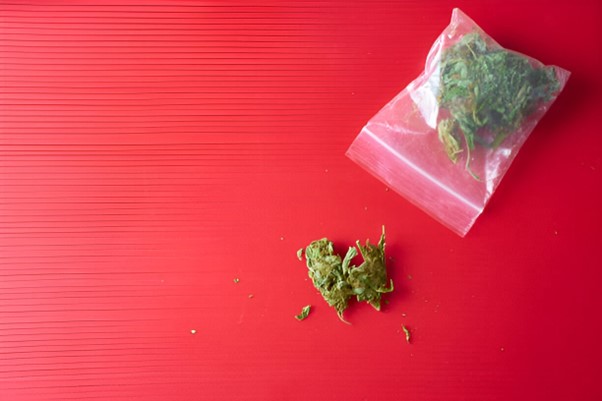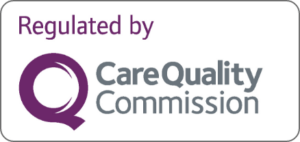Navigating the Shadows: Unveiling the UK’s Drug Capitals and Addiction Statistics

In a country celebrated for its rich history, cultural heritage, and pioneering spirit, the UK faces a less commendable battle behind the scenes – the fight against drug addiction.
From the bustling streets of its largest cities to the quiet corners of small towns, the spectre of drug abuse casts a long shadow across the nation. But what areas are most afflicted? Which city wears the unwelcome crown as the drug capital of the UK?
And more importantly, what are the statistics that paint the true picture of drug addiction and abuse within the United Kingdom?
This article embarks on a journey through the darkest alleys of the UK’s drug scene, armed with the latest statistics and research findings to map out the territories most ravaged by drug use.
We aim to shed light on the worst drug areas, delve into the depths of drug addiction statistics, and explore the complexities of tackling this issue head-on. With a blend of government data, academic research, and insights from the front lines, we’ll provide a comprehensive overview of the UK’s drug dilemma.
Defining “Drug Capitals”: A Complex Landscape
Pinpointing specific “drug capitals” in the UK is a complex task. Unlike illicit narcotics, legal substances like alcohol and tobacco are widely available, creating a nuanced picture of drug use across the country. Furthermore, deprivation, social factors, and access to treatment all play a role in shaping addiction rates. However, data on hospital admissions and drug-related deaths can offer some insights. According to the National Institute for Health and Care Excellence (NICE) , areas in Scotland, particularly Glasgow and Dundee, consistently have some of the highest rates of drug-related deaths. These regions grapple with entrenched social issues like poverty and unemployment, which can contribute to substance abuse.
A Nationwide Problem: The Scourge of Drugs
While some areas might face a more acute crisis, drug addiction is a nationwide concern. A 2021 report by the Office for National Statistics(ONS) revealed that an estimated 3.2 million people in England and Wales aged 16 to 59 had used illicit drugs in the last year . This translates to roughly 14.1% of the population within this age range. The most commonly used drugs include cannabis, cocaine, and ecstasy (MDMA). Heroin and other opioids, though less prevalent, still pose a significant threat. A report by Public Health England (PHE) in 2018 highlighted a worrying rise in deaths related to synthetic opioids like fentanyl.
Social Disadvantage and the Vicious Cycle
The relationship between social disadvantage and drug addiction is undeniable. A 2020 study published in the journal Addiction found a strong link between deprivation and drug-related deaths . Areas with high levels of unemployment, poor housing conditions, and limited access to healthcare are more susceptible to drug problems.This creates a vicious cycle. Drug use can exacerbate existing social issues, leading to job loss, relationship breakdown, and financial hardship. These circumstances, in turn, can further push individuals towards addiction.
A Glimpse into the Statistics: A Cause for Concern
The following statistics paint a concerning picture of the UK’s drug problem:
Drug-related deaths in the UK
In 2022, England and Wales recorded a slight increase in drug-related deaths, continuing a worrying trend that has seen these numbers rise for the eleventh consecutive year. According to the Office for National Statistics, there were 4,907 deaths related to drug poisoning, marking a small rise from the 4,859 deaths registered in 2021.
This escalation brings the rate to approximately 84.4 deaths per million people, the highest figure since records began in 1993. Notably, a significant proportion of these deaths, 3,127 to be exact, were identified as drug misuse, accounting for about 63.7% of all drug poisonings.
When excluding cases where the specific substances involved were not recorded (1,240 deaths), the percentage of drug-poisoning deaths attributed to drug misuse rises to 85.3%.
The data highlights the persistent challenge of drug misuse, with opiates being involved in nearly half of all drug-poisoning deaths in 2022, and the number of deaths involving cocaine continuing to climb for the 11th consecutive year.
Mental health and addiction
The link between mental health and addiction in the UK is well documented. Here’s a breakdown of relevant statistics from government institutions:
Adult Substance Misuse Treatment Statistics 2022 to 2023: This report by the Department of Health and Social Care shows a concerning trend. There were 290,635 adults in contact with drug and alcohol services between April 2022 and March 2023. This is a small rise compared to the previous year (289,215). The number of adults entering treatment in 2022 to 2023 was 137,749, which is higher than the previous 2 years’ figures (130,490 and 133,704).
Drug-Related Hospital Admissions in the UK
Drug-related hospital admissions are a significant concern in the UK, placing a strain on healthcare resources and highlighting the gravity of the addiction problem. Let’s delve into some key data points from reliable government sources:
Public Health England : This government agency provides a wealth of data on drug-related hospital admissions. Their report “Hospital admissions due to substance misuse (15 to 24 years) New data”:
Admissions by Year: There were 99,782 admissions with a primary or secondary diagnosis of drug-related mental and behavioural disorders in 2019/20.
This represents a rate of 180.5 per 100,000 population.
Admissions by Poisoning: In the same period, there were 16,994 admissions for poisoning by drug misuse, representing a rate of 30.5 per 100,000 population .
Regional Variations:
It’s important to note that drug-related hospital admissions vary geographically. While national statistics provide a starting point, more granular data is available:
Scotland: Scotland faces a particularly acute crisis. Statistics from the Scottish Government reveal consistently high rates of drug-related deaths, with areas like Glasgow and Dundee showing a disproportionate burden. But recently it has dropped to an all time low in the last 5 years.
Beyond the Numbers: The Human Cost of Addiction
Statistics offer a valuable perspective, but the true impact of drug addiction lies in the human stories. Drug use can have devastating consequences, tearing families apart, impacting physical and mental health, and ultimately leading to death. Children of addicted parents often face neglect, abuse, and emotional trauma. Communities are burdened by increased crime rates and strained social services.
A Multi-Faceted Threat: The Diverse Landscape of Drug Use
The landscape of drug use in the UK today is as varied as it is concerning. Recent findings indicate a significant rise in the use of both traditional and novel substances. Cannabis remains the most commonly used drug, with its ubiquity cutting across various demographic groups.
However, the increase in the consumption of cocaine, MDMA, and new psychoactive substances (sometimes misleadingly called “legal highs”) signals a shifting drug culture that is both dynamic and unpredictable.
Unpacking the Reasons for Drug Use
The reasons behind drug use are as diverse as the individuals involved. Socio-economic factors play a significant role, with unemployment, poverty, and lack of education being strongly correlated with higher drug use rates.
However, the allure of drug use transcends economic conditions, affecting individuals across the social spectrum. Psychological factors, such as stress, trauma, and the desire for escapism, also contribute to drug consumption.
The environment, including peer pressure and the availability of drugs, further influences individuals’ decisions to engage in drug use.
In Conclusion
In wrapping up our journey through the intricate landscape of drug use and addiction in the UK, it’s clear that the issue extends far beyond mere numbers and statistics. Each figure represents a person, a family, and a community grappling with the consequences of addiction.
The so-called drug capitals of the UK, along with areas highlighted for their high rates of drug use, are not just geographical locations on a map; they are places where the battle against drug misuse is fought every day, on personal and collective fronts.
The narrative woven through the statistics, stories, and strategies discussed here underscores a critical truth: the fight against drug addiction in the UK is not solely the responsibility of law enforcement or healthcare providers.
It’s a collective challenge that demands a unified response from every segment of society, including education, social services, and community initiatives. The road ahead, though fraught with obstacles, also offers hope—hope that through continued effort, innovation, and compassion, the tide can turn against drug misuse.
Share with:





